Since his daughter’s murder in December 2012, Jimmy Greene has inhabited the wearisome world of after. He begrudges no well-meaning, if tone-deaf, attempts at consolation. But “as long as I’m breathing there will be no closure,” he says. A jazz saxophonist and composer, Greene (CFA’12) has cried every day since first-grader Ana Grace was killed in the mass shooting at Sandy Hook Elementary School in Newtown, Conn.
“My daughter Ana was born on a Tuesday morning in early April 2006,” Greene writes in the liner notes to his recent CD, Beautiful Life, recorded in her memory. “Her life was ended in her first grade classroom on a Friday morning in mid-December—six years, eight months, and ten days later.”
The loved ones of those lost that day—children, teachers, the beloved school principal—have found their own ways to move beyond the shock, if not the grief. For Greene, known for his elegant sound, gentle wit, and generosity as both an international performer and a teacher, there is, and always has been, the music.
“When there’s not an accurate way to express my emotion or my struggle or my trauma, there’s music,” he told National Public Radio. “It’s akin to talking it out with someone.” Music, like one’s native language, “just is,” says Greene, whose quartet frequents legendary New York jazz venues like the Village Vanguard. His music may never repair the gash in the hearts of his wife, Nelba, Ana’s brother, Isaiah, or him, but it does help him “feel more like himself.”
In Beautiful Life, nominated for two 2015 Grammy Awards, Greene pays tribute to his daughter in a way that is as tender and life-affirming as it is heartrending. Among Greene’s vast family of fellow musicians, many joined him on the recording, which draws on the talents of jazz greats Pat Metheny and Kurt Elling and Tony Award–winning actress Anika Noni Rose (the voice of Tiana from Ana’s Disney favorite The Princess and the Frog) to create music that honors the passions of Ana Grace Márquez-Greene in all her intelligence, mischief, optimism, and unbounded glee. The CD cuts also include accompaniment by the Hartford Symphony Orchestra and a children’s choir. “Much attention has been paid to the way in which my precious Ana died,” Greene writes in the liner notes, “but this album attempts to paint the picture of how she lived—lovingly, faithfully, and joyfully.”
He accomplished that with what he calls “an intense, cohesive, genre-spanning program”—juxtaposing the hard-core instrumental jazz he is best known for with traditional spirituals, contemporary Christian music, standard ballads, and three original songs framing his own lyrics. For Greene it was all about creating, in his daughter’s memory, the most beautiful sound. There’s a wistful piano and sax interpretation of “Maybe” from the musical Annie, which Ana was obsessed with. There’s an interpretation of the hymn “Come Thou Almighty King,” which Ana and Isaiah belted out in a heartbreaking YouTube video that went viral in the wake of Sandy Hook. The CD version begins with a recording from a family gathering at the Puerto Rico home of Nelba’s family, who all sing or play instruments.

The six-foot-five Greene wears two bracelets on his right wrist. One says, “Ana Grace, Love Wins,” and the other holds the names of all of the victims of the Sandy Hook Elementary School shooting. Photo by Chris Sorensen
“Ana Grace, Love Wins”
Greene graduated from the Hartt School in 1997 and went on to become one of the most respected jazz artists of his generation. Among his many solo releases are Live at Smalls (SmallsLive), Mission Statement (RazDaz/Sunnyside), The Overcomers Suite (NuJazz), Gifts and Givers (Criss Cross), True Life Stories (Criss Cross), Live at Birdland (RCA Victor), and Introducing Jimmy Greene (Criss Cross). His recordings have earned praise not just for his sound, but for a technical prowess that never seems labored. Jim Macnie of the Village Voice writes that Greene “is good for a couple of body chills every time you see him.” In 1999 DownBeat Magazine recognized him as one of 25 Young Rising Stars in Jazz.
A varsity basketball player before he got his workouts on club and concert hall stages, Greene is six-foot-five, with a close-cut beard and a sartorial flair. On his right wrist are two bracelets he never removes. One says, “Ana Grace, Love Wins,” and the other is embossed with the names of all the Sandy Hook victims. A Western Connecticut State University assistant professor of music and coordinator of jazz studies, he has found distraction and refuge in the suburban campus’ gleaming two-year-old Visual and Performing Arts Center, an Escheresque maze of a building with a floating ramp bridge and state-of-the-art concert hall.
He is cocooned in his windowless studio, with a baby grand piano, a drum set, and walls decorated with posters from gigs in Rouen, Venice, and a jazz festival on Siberia’s Lake Baikal. There are framed covers of classic jazz albums by John Coltrane, Charlie Parker, and Jackie McLean, Greene’s great friend and mentor, who died in 2006. McLean’s unconventional teaching style was the subject of a paper Greene wrote as part of his continuing doctoral work at the Manhattan School of Music.
A prodigy with a distinctive brash sound, McLean, or “JMac,” recorded with Miles Davis at age 20. He was a major inspiration in Greene’s life, and he lights up when he speaks of the man. Greene was not weaned on jazz. Born in Alabama, Greene’s father earned master’s degrees in math and telecommunications, as well as an MBA. But it wasn’t until he took a Berklee correspondence course to become a songwriter (he went on to have a few R&B hits) that he began sharing his record collection with his son.
At 10th grader Greene’s first meeting with McLean, arranged by a teacher in his gifted and talented program, he regaled the great saxophonist with a Charlie Parker melody played in the wrong key. “He knew I was very inexperienced, but could see the talent in me, and invited me back the next Saturday, when he gave me these assignments,” Greene says. “I’m sure he figured, ‘I won’t hear from him for a while,’ but I called him back a week later, and from that moment he could see I was really dedicated and motivated, that I had talent and was serious.” That experience “put me on the course I never got off of. The first day I met him was November 3, 1990, when I heard his sound echoing through the building. It was the most amazing sound ever, not like anything I’d ever heard,” he recalls. “I was so taken aback by how gracious and encouraging he was.”
McLean’s approach informs his own teaching style, says Greene, who earned a master’s in music education at the College of Fine Arts. Like McLean, he insists on getting to know his students, not just as musicians but as people—to “find out what they’re all about.”
Ana’s brother, a natural on sax like his father, is lately obsessed with hockey and being 12 and would prefer, his father says, to keep private the shadow cast by his sister’s death.
Greene has performed around the globe, from Israel to Uruguay, but since Ana died he has been staying close to home and family, playing gigs mainly in New York City and around New England. “When you’re dealing with grief, there’s nothing that makes it better,” he says. “I’ve been asked many times, does the music help? I think the music doesn’t make grief better, but the act of music-making requires so much focus and energy that after it’s done you realize you’ve spent an hour and your mind’s been transported somewhere else. When you’re grieving you need that, or your mind will be focused on your pain 24/7. And with music, you know that you’re doing something in the moment. You’re trying to make the music as beautiful and as meaningful as you can in that moment.”









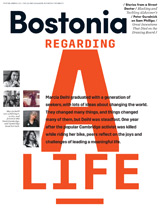


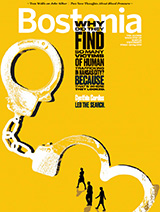



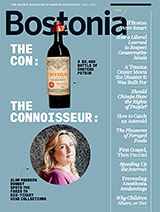



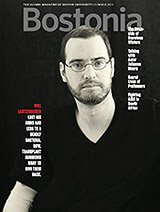


















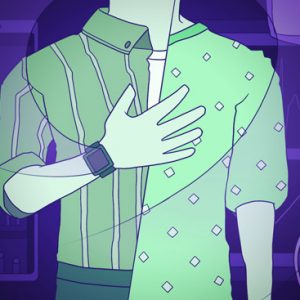



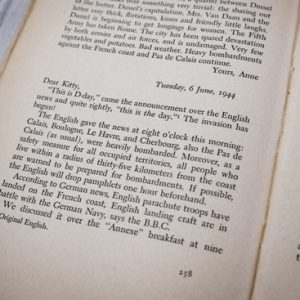




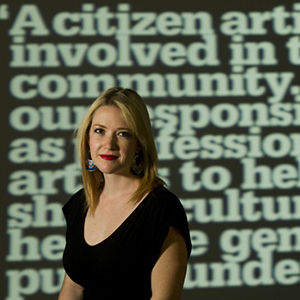
Simply Beautiful. Great writing, great story and as a person who you’ll often find humming away I appreciate knowing I am not alone. Thanks for this piece.
Susan, I loved the story. You write so beautifully!
An enormous tragedy seems that much worse after learning about one of the beautiful lives cut short and the gaping hole left in a father’s heart. May Ana Grace’s memory be a blessing for all of us.